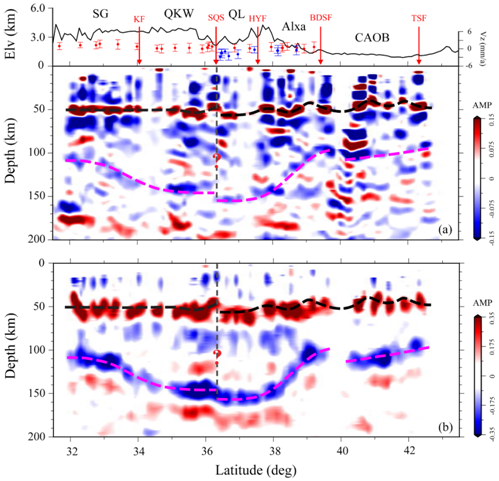New insights found into how mountains grow in Northeastern Tibet
Aug 29, 2020
The Tibetan Plateau is one of the largest and highest plateaus on the Earth. The formation of the Tibetan Plateau is generally accepted to be the consequence of India-Eurasia continent-continent collision since ~55 Myr ago. However, how the presence of high topography of the plateau has been built is a long-standing issue. Researchers at Southern University of Science and Technology (SUSTech) have revealed the mechanism behind the rise of mountains within the Tibetan Plateau.
Assistant Professor Zhen Guo (Ocean Science and Engineering) has led his research team to unveil the mechanisms behind mountain building in the Tibetan Plateau. Their paper, titled “Lithospheric Thickening Controls the Ongoing Growth of Northeastern Tibetan Plateau: Evidence from P and S Receiver Functions,” was published in the high-impact academic journal, Geophysical Research Letters (IF = 4.5).
Northeastern Tibet (NE Tibet) is located between the relatively stable North China Craton (Alxa and Ordos blocks) and the Qiangtang block (Figure. 1). At present, NE Tibet is a unique natural laboratory to understand the mountain-building processes associated with the lateral growth of the Tibetan Plateau.

Figure 1. Tectonic setting of NE Tibetan Plateau and seismic stations used in this study
The research group collected seismic data from a total of 29 broadband seismic stations in NE Tibet. They constructed a high-resolution lithospheric structure of NE Tibet using the P– and S-wave receiver function (Figure. 2).

Figure 2. Migrated P (a) and S (b) receiver function images along with the seismic profile
Previous geophysical studies suggested that only the crust that was shortened and thickened during plateau expansion. At the same time, the lithospheric mantle was decoupled from the overlying crust. The research group found a significant thickening of the lithospheric mantle beneath the Qaidam-Kunlun-West Qinling and Qilian terranes. The lithosphere deepens for at least 35 km beneath these blocks, compared to the thin and flat lithosphere beneath the Songpan-Ganzi and the Asian continent.
This new finding suggests that the current NE Tibetan lithosphere is “deformable.” The weak lithosphere absorbs the northward converging deformation. Simultaneously, the Ordos lithosphere to the east is behaving as an indenter that effectively resists the eastward expansion of NE Tibet. It results in the significant lithospheric thickening beneath NE Tibet.
The consistent step-ups observed in both Moho and LAB suggests the South Qilian Suture (SQS) could be a significant tectonic boundary and deformation discontinuity in NE Tibet. It may cut across the entire lithosphere, which partly accommodates the lithospheric deformation. Although the entire lithosphere thickens on both sides of the SQS, slightly different rheology in the lithosphere would lead to a net differential thickening between lithospheres across the SQS.
This study demonstrates, for the first time, the importance of mantle lithospheric thickening in controlling the mountain building during the step-wise expansion of the plateau.
The first author of this paper is Dr. Chen Zhang. Assistant Professor Zhen Guo is the corresponding author. Additional contributions came from Chair Professor Yongshun John Chen.
This work is supported by the National Natural Science Foundation of China and the start-up fund from Southern University of Science and Technology.
Link of the research article: https://agupubs.onlinelibrary.wiley.com/doi/full/10.1029/2020GL088972
Latest News
Related News












